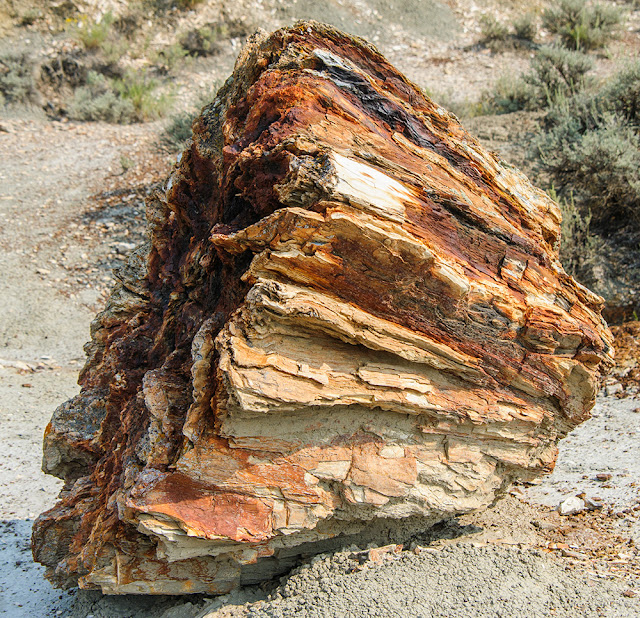After touring the visitors center, we went out back to look at Teddy Roosevelt's Maltese Cabin. It had been moved there from six or seven miles away, and had been TR's home in the wilderness for over a year. He came here after the loss of his wife and mother, on the same day in 1884.
It was amazing to me how simple and small it was, considering that he was a very rich man and would go on to become president of the United States.
But it was 130 years ago.
The smoky conditions discouraged us when we started to take a drive up through the park. Most of the distant vistas were not much more than soft shadows, so we turned back after a few miles.
The next day things were still smoky and the weather forecast was for 99° afternoon temperatures. We had read about an interesting three mile loop trail that would take us to some petrified wood, so we got up and out early (for us) to try to beat the heat.
The first third of the hike was up a rough, but not too steep, dry hill. Once at the top, the trail went across a wide grass mesa.
On this section of the trail we encountered some of the largest masses of horse dung we had ever seen. On another similar pile some of it was old and some new.
When we were passed by these four riders, I asked the leader if he knew why there were these large piles.
He said that he had heard that the stallions leave their mark this way, much like boy dogs on a fire hydrant.
There are wild, feral, horses in the park.
After the grassland, we descended down into a valley where the petrified wood was. You can see the air was still pretty thick with smoke, but fortunately neither Craig nor I were bothered by it.
The petrified wood was quite different from that which we saw in the Petrified Forest in Arizona.
I guess it depends on what kind of trees they were and what minerals replaced the wood.
The large mesas and domes in the park are examples of erosion where the harder rock caps protect softer rocks below them, from being washed away. This happens on both the large and smaller scale. The picture above is of a formation that is about five feet high. In front of it is a perfectly petrified tree trunk.
This one reminded me of a giant almond.
We only walked in about a mile, choosing to turn back before it got too hot. I would rather have a shorter hike and end with good memories of the day.
I end with this picture for you to ponder.


























































